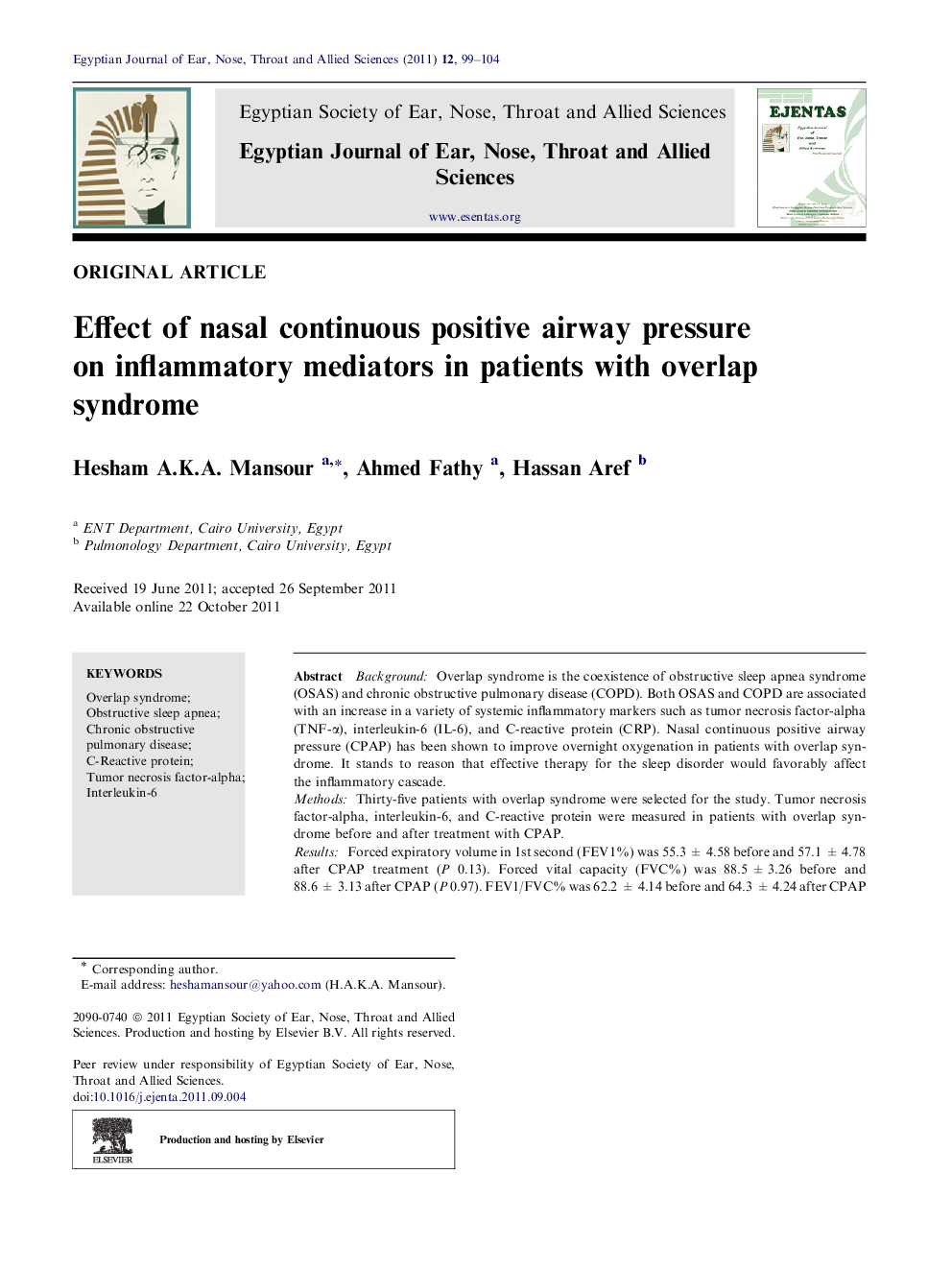| Article ID | Journal | Published Year | Pages | File Type |
|---|---|---|---|---|
| 4109022 | Egyptian Journal of Ear, Nose, Throat and Allied Sciences | 2011 | 6 Pages |
BackgroundOverlap syndrome is the coexistence of obstructive sleep apnea syndrome (OSAS) and chronic obstructive pulmonary disease (COPD). Both OSAS and COPD are associated with an increase in a variety of systemic inflammatory markers such as tumor necrosis factor-alpha (TNF-α), interleukin-6 (IL-6), and C-reactive protein (CRP). Nasal continuous positive airway pressure (CPAP) has been shown to improve overnight oxygenation in patients with overlap syndrome. It stands to reason that effective therapy for the sleep disorder would favorably affect the inflammatory cascade.MethodsThirty-five patients with overlap syndrome were selected for the study. Tumor necrosis factor-alpha, interleukin-6, and C-reactive protein were measured in patients with overlap syndrome before and after treatment with CPAP.ResultsForced expiratory volume in 1st second (FEV1%) was 55.3 ± 4.58 before and 57.1 ± 4.78 after CPAP treatment (P 0.13). Forced vital capacity (FVC%) was 88.5 ± 3.26 before and 88.6 ± 3.13 after CPAP (P 0.97). FEV1/FVC% was 62.2 ± 4.14 before and 64.3 ± 4.24 after CPAP (P 0.064) IL-6 was 3.13 ± 0.56 before and 1.87 ± 0.15 after CPAP (P < 0.0001). TNF-α was 7.4 ± 1.29 before and 4.77 ± 0.96 after CPAP (P < 0.0001). CRP was 0.83 ± 0.1 before and 0.44 ± 0.18 after CPAP (P < 0.0001).ConclusionThere is statistically significant difference in inflammatory markers levels before and after CPAP treatment in patients with overlap syndrome. This suggests that inflammation in overlap syndrome may be mediated by inflammatory markers in the form of CRP, IL-6, and TNF-α.
